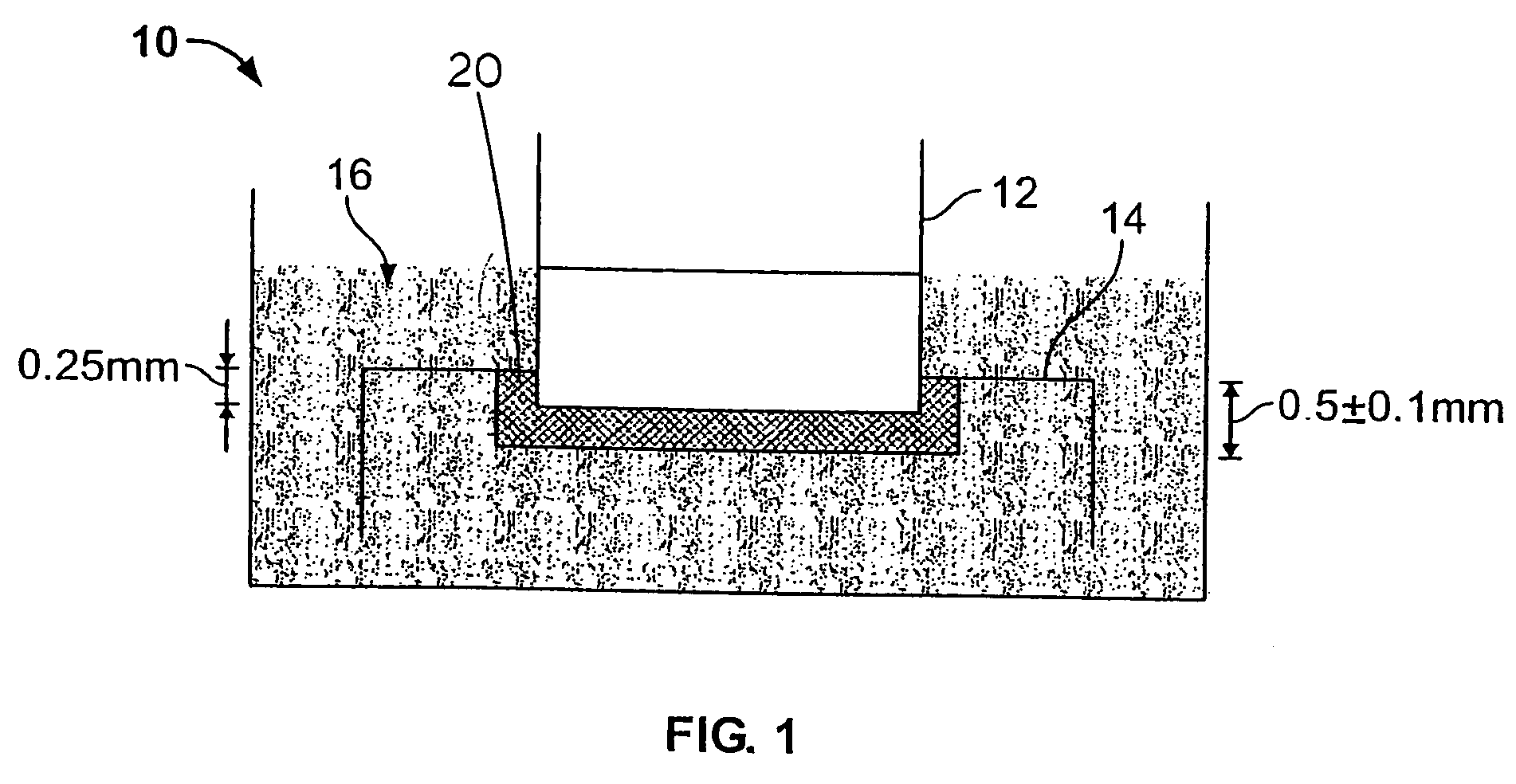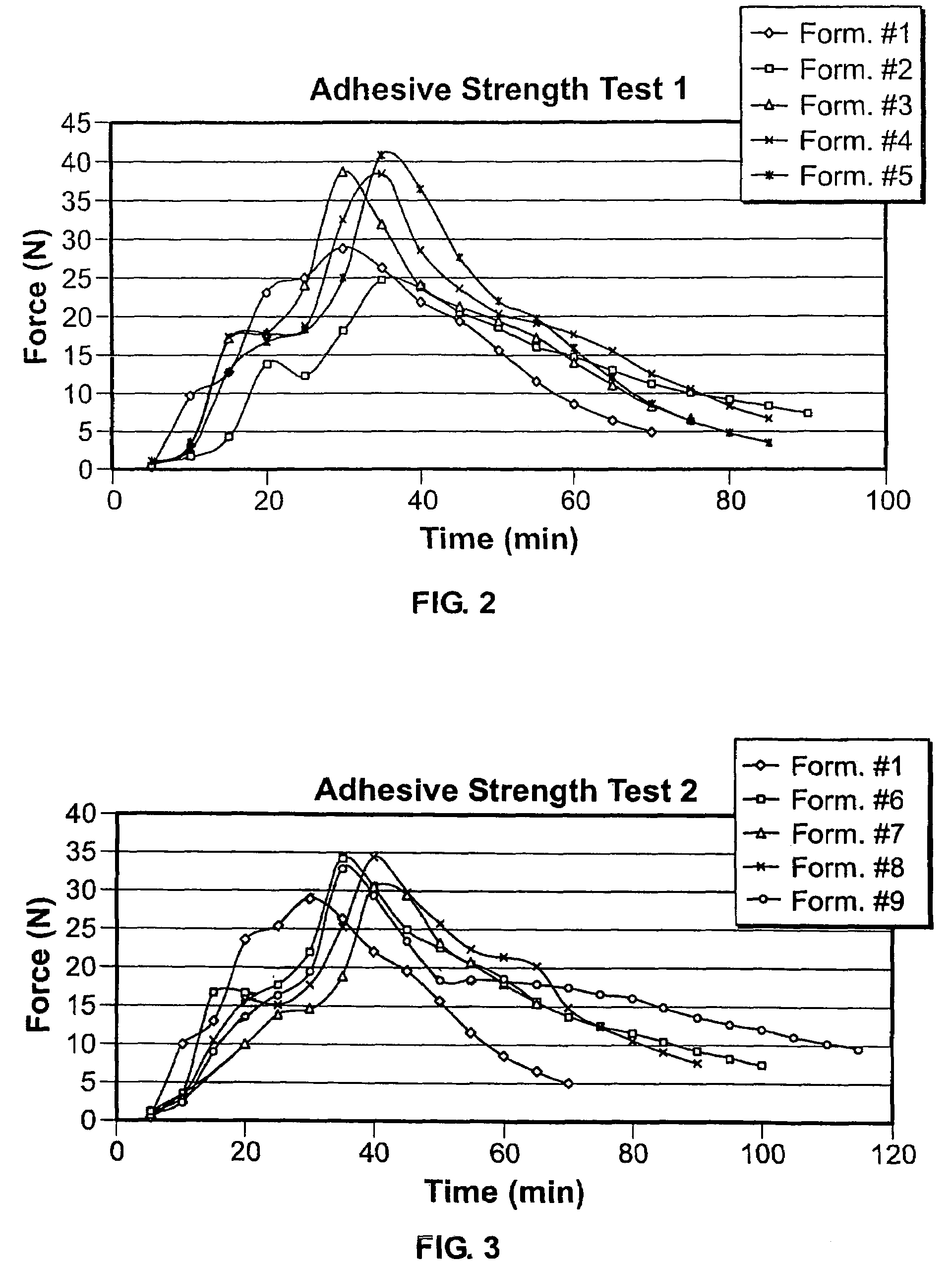Denture fixative composition
a technology of fixative compositions and teeth, applied in the field of dental fixative compositions, can solve problems such as difficulty in achieving
- Summary
- Abstract
- Description
- Claims
- Application Information
AI Technical Summary
Benefits of technology
Problems solved by technology
Method used
Image
Examples
example 1
[0085]As shown in Tables 2 to 4 below, paste-form denture fixative compositions that contained ingredients a and c but did not contain ingredient b (Formulations #1 and #2; comparative examples) and paste-form denture fixative compositions containing ingredients a, b and c (Formulations #3 to #14; present invention) were prepared in a standard manner, and the adhesive strength of these formulations was measured. The unit for the numbers in the tables is wt. %. The adhesive strength of commercially available denture fixative compositions A and B shown in Table 5 below was also measured in addition to the formulations of Tables 2 to 4 above. FIGS. 2 to 5 show the measurement results.
[0086]
TABLE 2Experimental CompositionFormulation No.Components#1#2#3#4#5Gantrez MS-95531.529.529.529.529.5Sodium carboxymethyl22.020.520.520.520.5celluloseMineral Oil-124.022.522.522.522.5White petroleum jelly-122.020.520.520.520.5Silicon dioxide0.50.50.50.50.5Hydroxypropyl cellulose6.5(Avg. Mw. 100,000)L-...
example 2
[0100]As shown in Table 6 below, Formulations #L1 to #L4 containing various proportions of L-HPC, and Formulation #1 used in Example 1, were prepared, and the adhesive strength of these formulations was measured by following the procedure in Example 1. Table 6 shows the measured maximum adhesive strength. The maximum adhesive strength of Formulation #1 is 29.0 N.
[0101]
TABLE 6ExperimentalFormulation No.Composition Components#L1#L2#L3#L4Gantrez MS-95530.5429.1428.6427.39Sodium carboxymethyl21.3420.3420.0219.12celluloseMineral Oil-123.2822.1821.8220.87White petroleum21.3420.3420.0219.12jelly-1Silicon dioxide0.500.500.500.50L-HPC (LH-31)3.006.509.0013.00Total100100100100Maximum adhesive36.138.535.738.2strength (N)
[0102]The maximum adhesive strength of Formulations #L1 to #L4, which contains L-HPC, are clearly higher than that of Formulation #1.
example 3
[0103]As shown in Table 7 below, Formulations #A1 to #A5 containing various proportions of agar and Formulation #1 used in Example 1 were prepared, and the adhesive strength of these formulations was measured by following the procedure in Example 1. Table 7 shows the measured maximum adhesive strength. The maximum adhesive strength of Formulation #1 is 29.0 N.
[0104]
TABLE 7ExperimentalCompositionFormulation No.Components#A1#A2#A3#A4#A5Gantrez MS-95530.5429.5029.1428.6427.39Sodium carboxymethyl21.3420.5020.3420.0219.12celluloseMineral Oil-123.2822.5022.1821.8220.87White petroleum21.3420.5020.3420.0219.12jelly-1Silicon dioxide0.500.500.500.500.50Agar3.006.507.509.0013.00Total100100100100100Maximum adhesive33.732.835.230.832.0strength (N)
PUM
| Property | Measurement | Unit |
|---|---|---|
| particle size | aaaaa | aaaaa |
| temperatures | aaaaa | aaaaa |
| weight ratio | aaaaa | aaaaa |
Abstract
Description
Claims
Application Information
 Login to View More
Login to View More - R&D
- Intellectual Property
- Life Sciences
- Materials
- Tech Scout
- Unparalleled Data Quality
- Higher Quality Content
- 60% Fewer Hallucinations
Browse by: Latest US Patents, China's latest patents, Technical Efficacy Thesaurus, Application Domain, Technology Topic, Popular Technical Reports.
© 2025 PatSnap. All rights reserved.Legal|Privacy policy|Modern Slavery Act Transparency Statement|Sitemap|About US| Contact US: help@patsnap.com



